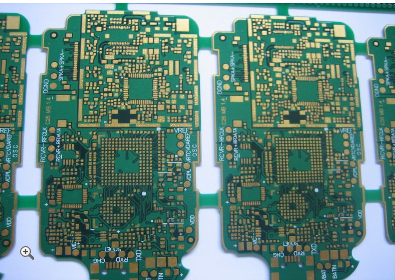PRODUCTS
High Frequency Board Signal Integrity

High-frequency board signal integrity is a critical concern in modern electronic design, particularly as operating frequencies continue to climb and data rates increase exponentially. Ignoring signal integrity at high frequencies can lead to significant performance degradation, malfunctions, and even complete system failure. This article delves into the complexities of high-frequency board signal integrity, offering a multifaceted perspective on the challenges and solutions involved. Understanding these principles is crucial for engineers designing high-speed digital systems, ranging from advanced computing platforms and data centers to communication networks and high-end consumer electronics. The increasing reliance on high-speed serial interfaces like PCIe, SATA, and USB necessitates a firm grasp of these concepts.
Transmission Line Effects
At high frequencies, the transmission line characteristics of PCB traces become dominant. Unlike at lower frequencies where traces can be treated as simple wires, at high frequencies, the inductance, capacitance, resistance, and conductance of the trace itself become significant factors. These parameters interact to influence signal propagation, leading to phenomena like reflections, signal distortion, and crosstalk. Reflections occur when impedance mismatches are present along the signal path, causing a portion of the signal to be reflected back towards the source. This can lead to signal ringing and overshoot, potentially compromising data integrity and system stability.
Minimizing reflections requires careful impedance control. This involves using controlled impedance traces, ensuring proper termination at both ends of the trace, and managing the impedance of connectors and other components within the signal path. Advanced techniques such as controlled impedance microstrips and stripline structures are often employed to ensure predictable signal behavior.
Crosstalk and EMI/EMC
Crosstalk, the unwanted coupling of signals between adjacent traces, is another major challenge at high frequencies. As signal frequencies increase, the electromagnetic fields generated by the traces become stronger, leading to increased capacitive and inductive coupling to nearby traces. This coupling can corrupt signal integrity, leading to data errors and system instability. Proper trace routing and shielding are essential to mitigate crosstalk.
Electromagnetic interference (EMI) and electromagnetic compatibility (EMC) are also critical considerations. High-frequency signals radiate electromagnetic energy, which can interfere with other circuits and systems. Conversely, external electromagnetic fields can couple into the PCB and corrupt signals. To minimize EMI and ensure EMC compliance, designers employ various techniques including ground planes, shielding, and filtering. Careful consideration must be given to the placement of components and traces to minimize radiated emissions.
Skin Effect and Proximity Effect
The skin effect is a phenomenon where high-frequency currents tend to concentrate near the surface of a conductor, reducing the effective cross-sectional area for current flow and increasing the resistance. This effect becomes increasingly significant as the frequency increases. The proximity effect, on the other hand, describes the increased resistance of a conductor caused by the presence of nearby conductors carrying current. Both effects contribute to signal attenuation and power loss.
To mitigate the skin and proximity effects, designers might use wider traces, thicker conductors, or specialized materials with lower skin depth. Proper spacing between traces is crucial in managing the proximity effect.
Component Selection and Placement
The choice and placement of components significantly impact signal integrity. High-speed components need to be carefully selected to minimize parasitic inductance and capacitance. Surface-mount technology (SMT) is generally preferred for high-frequency designs due to its lower parasitic inductance. Moreover, careful component placement is critical to minimize trace lengths and ensure proper signal routing. Signal integrity simulation tools are often utilized to optimize component placement and routing.
High-frequency components often have specific placement requirements, which must be followed carefully to avoid compromising performance. This may involve specific guidelines for distance between sensitive components, orientation constraints, and the addition of decoupling capacitors close to the components.
Simulation and Measurement
Simulating and measuring signal integrity are crucial for verifying the design and ensuring that the performance meets the requirements. Advanced simulation tools allow designers to model the PCB and predict signal behavior under various conditions. These simulations can identify potential signal integrity problems early in the design process, saving time and cost during prototyping and testing. Measurements using sophisticated equipment, such as oscilloscopes and network analyzers, validate the simulation results and provide insights into the actual performance of the PCB.
This iterative process of simulation, prototyping, measurement, and refinement is essential for achieving optimal signal integrity in high-frequency designs. Careful attention to detail at every stage is crucial for success.
SUBSCRIBE
INQUIRY

